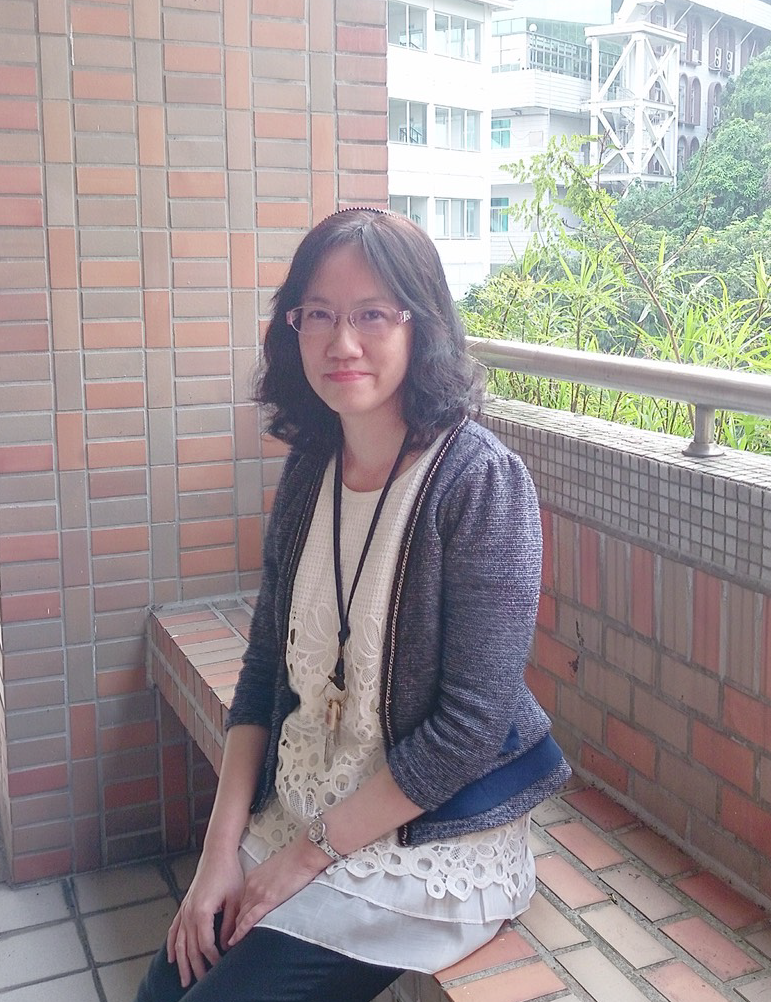江巧如副教授

| E-mail:noelle@mail.shu.edu.tw |
| 電 話:(02)2236-8225 轉 83536 |
| 研究室:舍我樓六樓S605室 |
| 現 職:世新大學社會心理學系副教授 |
| 學 歷:美國Tufts University 心理學博士 |
| 研究領域: |
|
| 經 歷: |
|
| 教師榮譽: |
|
| 研究成果: |
|
(A)Research Journal Papers:
論文發表均在中文拼音名前加上我的英文名Noelle。
Chiang, N. C. (Submission). Children’s use of left-right sense information in small-scale spaces. Cognitive Development.[SSCI] Chiang, N. C., Huang, S.-C. L., Kuo, N.-F., Shih, Chao-Cheng. (2023).Understanding cognitive maps from landmark and configurational representations. Learning and Motivation, 83, article 101910. https://doi.org/10.1016/j.lmot.2023.101910 [SSCI] Huang, S.-C. L., Chiang, N. C., Kuo, N.-F., Chen, Y.-J. (2019). An exploratory approach for using EEG to examine person-environment interaction. Landscape Research, 44(6), 702-715. [SSCI] Chiang, N. C. & Chen, M. (2017). Benefits of incubation on divergent thinking. Creativity Research Journal, 29(3), 282-291. [SSCI] Chiang, N. C., Yen, N., Littauer, R. & Chen, K. (2014). Geographical reasoning and biases: The view from Taiwan. The Journal of Kaohsiung Behavior Sciences, 4, 57-93. Chiang, N. C. (2013). Influence of global shapes on children’s coding of local geometric information in small-scale spaces. Learning and Motivation,44, 16-30. [SSCI] 江巧如 (2011)。空間認知的發展:以幾何空間模組派典理解人類如何編碼空間位置。高雄行為科學學刊。81-99頁。 Newcombe, N. S., & Chiang, N. C. (2007). Learning geographical information from hypothetical maps. Memory and Cognition, 35, 895-909. [SSCI; IF=1.566] |
|
(B)Conference Presentations:
陳妍臻、褚懿萱、江巧如(2024): 「焦躁的音符:音樂的存在對等待時長的影響研究」。「社會學與心理學對話—虛實合併的人際互動」研討會。台北世新大學。日期:2024. 4. 26.。 江巧如、蔡粲鴻(2023): 「孤寂感對圖文影音訊息之假新聞效應的影響」。台灣心理學會第62屆年會壁報論文。新竹市。日期:2023. 10. 21-22.。 Chiang, N. C., Huang, S.-C. L., Kuo, N.-F., Shih, C.-C. (2021). Understanding Cognitive Maps from Landmark and Configurational Representations. Poster presented at the 60th annual conference of the Taiwanese Psychological Association, October 16-17, Taipei, Taiwan. Huang, S.-C. L. & Chiang, N. C. (2019). Integration of conventional and GMDA approaches for sketch-map analyses. 2019 ICEPS, Sapporo, Japan. Chiang, N. C., Chen, Y-F., Wen, Y-H., Li, Y-S., &Wu, C-Y. (2016). Children reasoning about left/right sense information by its components in small-scale spaces. Poster presented at the 55th annual meeting of the Taiwanese Psychological Association, October 15-16, Taipei, Taiwan. Chiang, N. C., & Huang, S.-C. L. (2015). Is video scenery as appealing as real landscape? An EEG study. Paper presented at the 6th International Neuroscience and Biological Psychiatry Regional ISBS Conference “Stress and Behavior”, July 26-27, Kobe, Japan. 江巧如、吳佳樺、陳韻妃、溫雅慧、李思慧(2014): 「語言與空間參照系統對兒童使用左右空間關係訊息的影響」。台灣心理學會第53屆年會壁報論文。台北市。日期:2014. 11. 8-9.。 Chiang, N. C., Wu, J-H., Wang, Y-C., & Wu, C-F. (2013). Children’s use of left-right sense information in small-scale spaces. Poster presented at the 52nd annual meeting of the Taiwanese Psychological Association, October 19-20, Taipei, Taiwan. Huang, S.-C. L., & Chiang, N. C. (2013). The incremental validity of videos as visual surrogates. Paper presented at the International Academic Conference on Social Science, July 27-28, Istanbul, Turkey. Chen, M, & Chiang, N. C. (2010). Beneficial Effects of Distraction on Creativity: Unconscious Thought and its Role in the Creative Process. Poster presented at the 49th annual meeting of the Taiwanese Psychological Association, November 6-7, Chia-Yi, Taiwan. 江巧如(2009):「Children’s use of angular information」。「社會學與心理學對話」研討會。台北世新大學。日期:2009. 11. 6-7.。 詹育喬、江巧如(2009): 「專家與生手在複雜情境下不同思考歷程的決策優勢」。台灣心理學會第四十八屆年會壁報論文。台北市。日期:2009. 9. 26-27.。 江巧如、張鈴涓 (2008) : 「兒童如何使用空間形狀表徵中的角度訊息」。台灣心理學會第四十七屆年會壁報論文。台北市。日期:2008.10.4-5.。 Chiang, N. C., & Chen, S. (2007). Angular Information as a Shape Parameter in a Geometric Module. Poster presented at the 46th annual meeting of the Taiwanese Psychological Association, October 6-7, Tainan, Taiwan. Chiang, N. C., Yen, N., Chen, K., & Chen, P. (2005) Taiwanese’s Geographical Categories and Biases. Paper presented at the 44th annual meeting of the Taiwanese Psychological Association, October 1-2, Chung-Li, Taiwan. Chiang, N. C., & Newcombe, N. S. (2003). Learning geographical information from hypothetical maps. Paper presented at the 44th annual meeting of the Psychonomic Society, November 6-9, Vancouver, Canada. Bushnell, E. W., Ballesteros, S., Reales, J. M., Cohen, J., & Chiang, N. C. (2003). Haptic priming for attended and unattended stimuli interacts with “viewing” condition. Paper presented at the 44th annual meeting of the Psychonomic Society, November 6-9, Vancouver, Canada. Chiang, N. C., & Bushnell, E. W. (2001). Children’s perceptual judgments of human body postures and abstract configurations. Poster presented at the biennial meeting of the Society for Research in Child Development, April 19-22, Minneapolis, MN, USA. Chiang, N. C., & Bushnell, E. W. (1999). Components of priming in a haptic selective attention paradigm. Poster presented at the 40th annual meeting of the Psychonomic Society, November 18-21, Los Angeles, CA, USA. Bushnell, E. W., Chiang, N. C., & Gardner, A. (1997). Haptic, visual, and cross-modal perception with familiar and unfamiliar objects. Paper presented at the 38th annual meeting of the Psychonomic Society, November 20-23, Philadelphia, PA, USA. Huang, S.-T. T., Chiang, N. C., & Shyi, C.-W. G. (1996). The role of alignment in constructing 3D mental models from viewing 2D displays. Poster presented at the 67th annual meeting of the Eastern Psychological Association, March 29-31, Philadelphia, PA, USA. |
| 科技部(原國科會)計畫: |
|